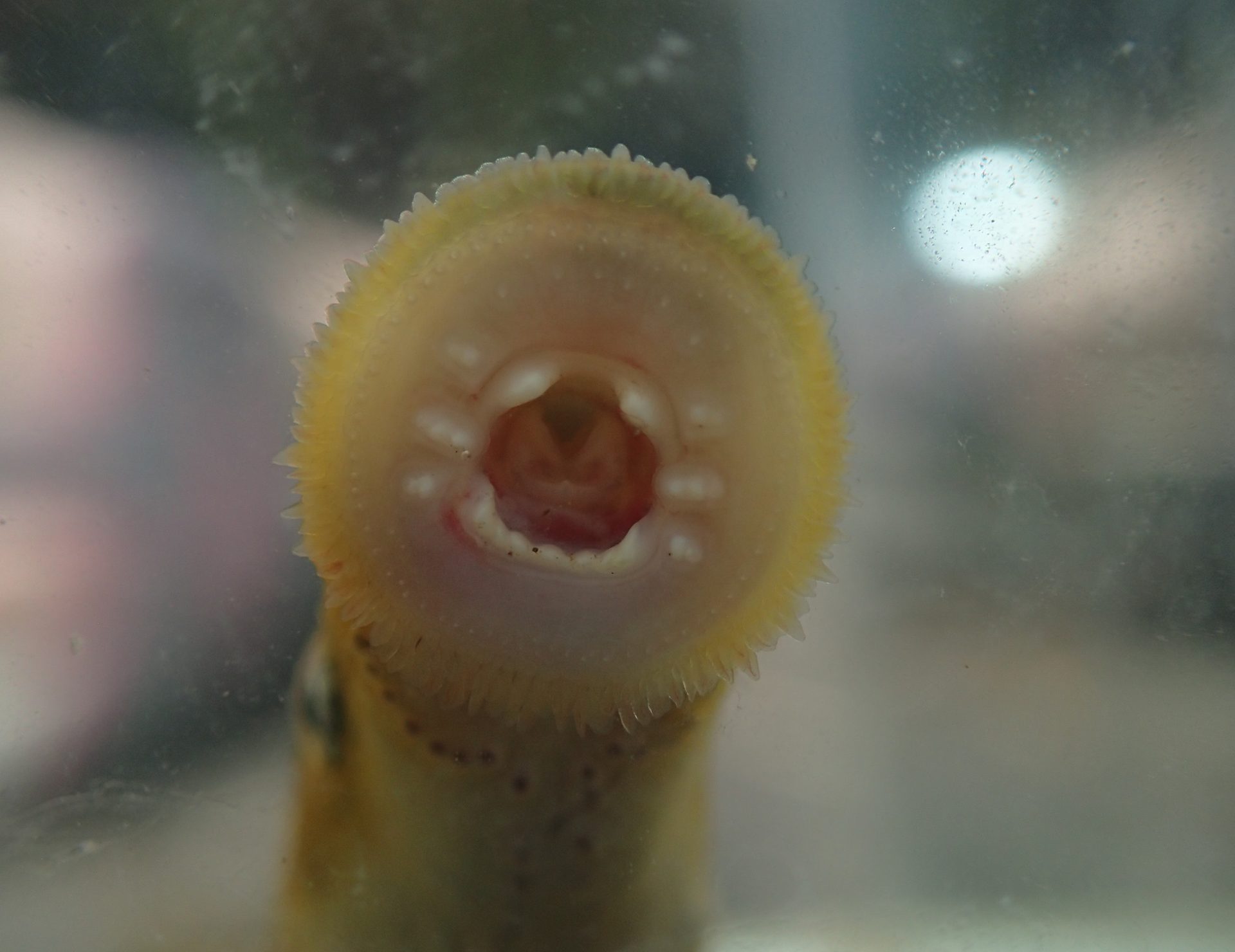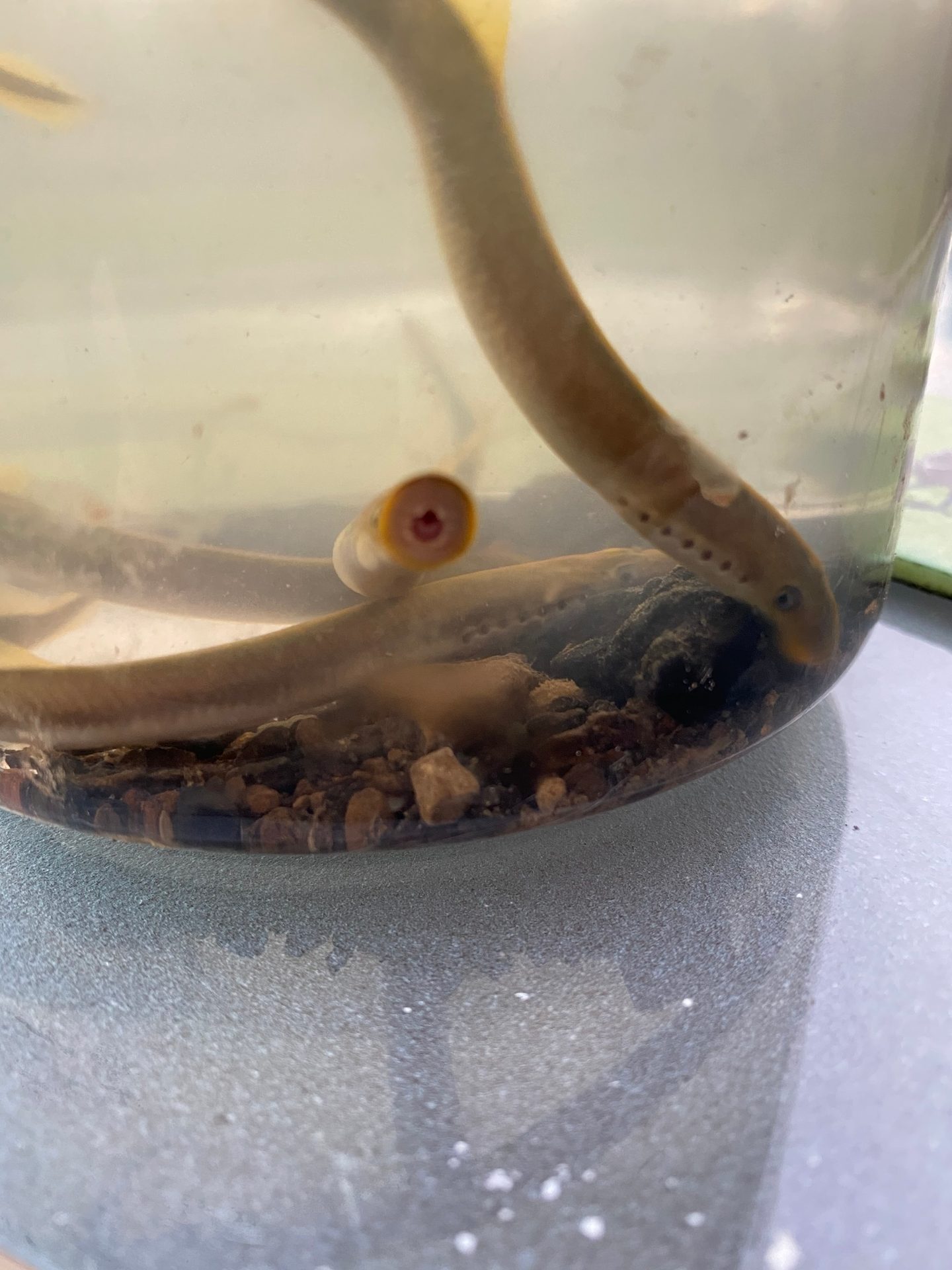
They are reclusive, primitive and eel-like; even if they look like one, they are not a fish. Instead, they belong to the superclass cyclostomi. Unlike some species of lamprey, the adults do not migrate to the sea and do not have a parasitic phase. Instead, they live most of their life as a larva buried in the silty stream bed before turning into an adult and swimming upstream to spawn.
© Julien Renoult (iNaturalist)
Adult Brook Lamprey have a long, eel-like body and measure 15-25cm. They are greenish-grey with two dorsal fins, a single nostril on top of their head, and eight orifices arranged in a row on both flanks behind each eye. The orifices were first thought to be eyes, but actually, seven of the openings are gills, and the other is an olfactory organ.

They lack jaws, instead possessing a sucker that spawning adults use to move stones and pebbles when preparing the nest site. The scientific name for their family, Petromyzontidae, refers to this, roughly translating as ‘stone suckling teeth’ in Greek.
During spawning, the anal and mouth areas of the Brook Lamprey turn an orangey red.
© Julien Renoult (iNaturalist)

The ammocoetes (larvae) are semi-translucent and grey-brown; however, some may have much-reduced pigment and appear golden.
Following metamorphosis, Brook Lamprey transformers turn more silvery along the sides, with their belly and back remaining dark grey-brown.
Unusual non-pigmented albino Brook Lamprey
Ammocoetes from the River Nire, Co Waterford
© Lampreysurveys.com

Distribution in Suffolk
Habitat
Brook Lamprey live in freshwater streams, rivers and, occasionally, lakes. They have exacting habitat requirements of gravel beds for spawning and soft marginal silts but with high levels of dissolved oxygen for the larvae. Sadly excess sediments from pollution can smother gravel riffles. In addition, the artificial straightening of river channels can disrupt the formation of gravel riffle and silt pool sequences. This means that whilst still relatively widespread, their numbers are declining.
© Hester Stanwood (iNaturalist)
Did you know?
A Brook Lamprey’s skeleton is made up of cartilage, not bone.

Diet
Brook Lamprey only feed as ammocoetes, filtering bacteria, algae, detritus and other organic matter from the water. Once they become an adult, their digestive functions stop, and they become unable to feed altogether.
© Olly Morgan (iNaturalist)
© Jesse Wissink (iNaturalist)
Spotting Brook Lamprey
As they spend much of their time hiding in the sediment, it can be challenging to spot them. Therefore, the best time to try and find them is during the spawning season, in shallow areas of clean and clear brooks, streams and rivers.
If you are lucky enough to spot Brook Lamprey don't forget to record your sighting!
